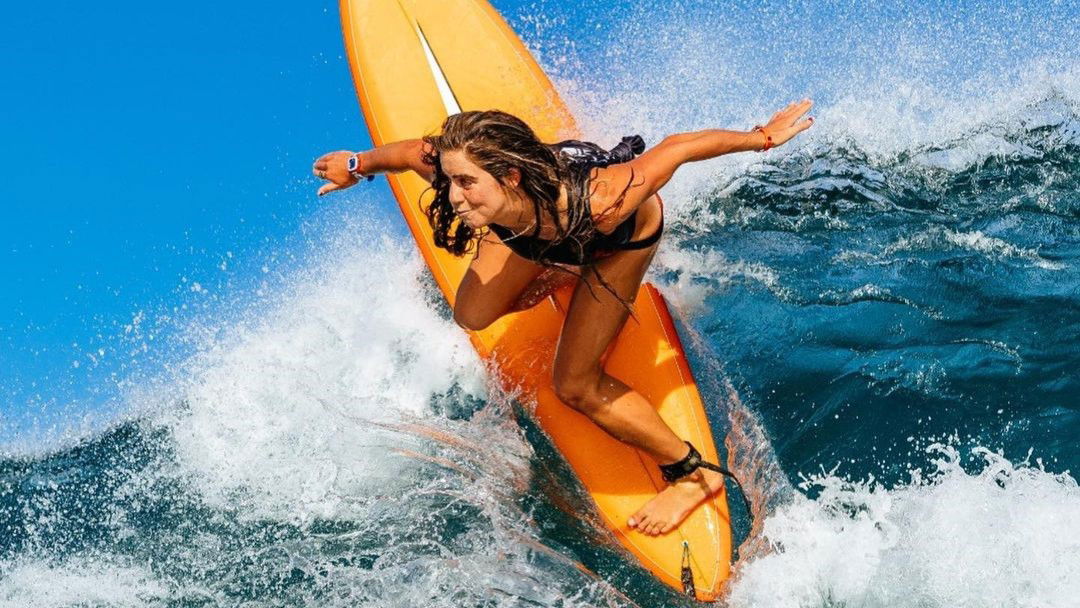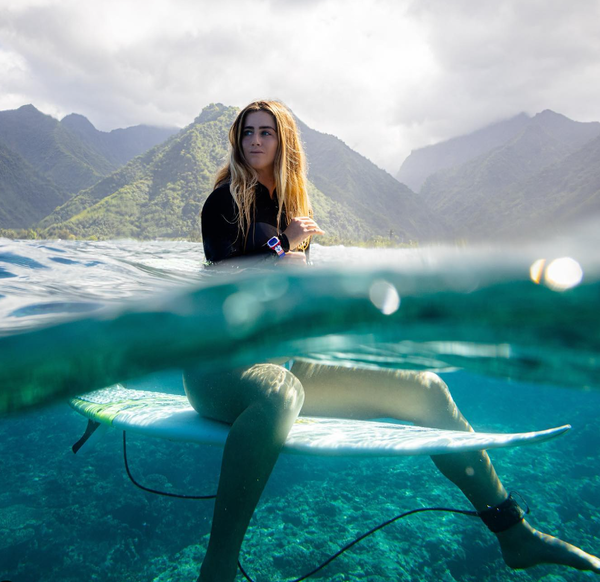

The 2024 Paris Olympics are set to make a splash—not in the City of Lights, but in the breathtakingly dangerous waters of Teahupo’o, Tahiti. This French Polynesian paradise is renowned for its awe-inspiring waves, but beneath the turquoise surface lies a menacing reef that has sent shivers down the spines of even the most seasoned surfers.
Watch What’s Trending Now!
Caroline Marks, reigning Rip Curl WSL champion and a force to be reckoned with on the waves, doesn’t mince words when describing Teahupo’o as having the “most beautiful, incredible waves,” but also that it’s “one of the most intense and scariest waves in the world.” The ever-changing conditions demand unwavering respect and meticulous preparation. Yet, these very challenges are what make Teahupo’o the ultimate proving ground for the world’s most elite surfers.
“It comes from very deep water and it breaks over this very shallow reef,” she explains, painting a vivid picture of the rapid transition that leaves little room for error. The reef, a notorious ‘wave magnet,’ amplifies Teahupo’o’s power, creating barrels ranging from two-foot ripples to twelve-foot monsters, thus increasing the potential for catastrophic wipeouts.
ADVERTISEMENT

ADVERTISEMENT
The unpredictable nature of Teahupo’o’s waves is a double-edged sword. While they offer the potential for spectacular aerial maneuvers and deep tube rides, they also pose a significant risk of collisions with the unforgiving reef. In an exclusive interview with PEOPLE Magazine, Marks, who is no stranger to pushing the limits, acknowledges the inherent dangers and has made a conscious decision to prioritize safety. But even with precautions, the risks remain high, and fellow Olympian Owen Wright has something to say about that.
Wright, surfing legend extraordinaire and Australia’s very first surfing bronze medalist from the 2020 Tokyo Olympics, shares Caroline Marks’ respect for Teahupo’o’s power and unpredictability. “The venue itself could present the best surfing we see at the Olympic level in my lifetime,” he acknowledges in an interview with Wide World of Sports, but cautions about the unique logistical challenges that come with holding the competition in such a remote and unpredictable environment. And these challenges extend beyond the waves themselves.
ADVERTISEMENT
“They (the surfers) won’t be able to see or get acquainted with the wave as well as they usually would when they sit off the edge of the wave. They won’t be sitting anywhere near it,” emphasizes Wright. These logistical hurdles, combined with the inherent dangers of the reef, have forced athletes to rethink their approach to safety—and it looks like one surfer is leading the charge this year.
Caroline Marks’ helmet choice sets a new Olympic precedent
Network connectivity, the potential for massive swells, and the intricate boat transport system for athletes all add layers of complexity to the competition. Wright’s advice to the surfing teams is simple yet crucial: “Make sure you pack your big boy or big girl pants,” underscoring the need for mental fortitude and physical preparedness in the face of Teahupo’o’s daunting conditions. And the level of this preparation goes beyond physical training and extends to mental resilience and adaptability—and a healthy scoop of safety precautions.
ADVERTISEMENT

ADVERTISEMENT
For Caroline Marks herself, safety takes precedence. “I think helmets are awesome,” she asserts, highlighting the growing trend of surfers adopting this crucial piece of protective gear. In the past, helmets were often viewed as cumbersome and unnecessary, but the tide is turning as surfers recognize the importance of safeguarding their most valuable asset: their brains. The threat of head injuries from collisions with the reef in the uncertain waters of Tahiti is a grave concern, and Marks’ decision to bring a helmet to the Olympics underscores the seriousness of the risks involved.
The dangers of Teahupo’o are not to be taken lightly. A wipeout on this reef can result in severe injuries other than just concussions, from lacerations and broken bones to even spinal damage. This stark reality has prompted a shift in the surfing world, with an increasing number of athletes choosing to prioritize safety by wearing helmets, just like Marks herself.
Top Stories
Sources: John Harbaugh Wasn’t Fired, Left Ravens After Refusing Major Staff Changes

Bill Cowher’s Strong Message to Steelers on Firing Mike Tomlin After HC’s Blunt Playoff Message

Bengals’ Cam Taylor-Britt Sentenced to Jail: Everything We Know About Charges Against Him

Kyle Tucker Handed Blunt Reality Check as Blue Jays Shift Focus to Bolster Vladimir Guerrero Jr.

US Visa Rejections Put Major Track & Field Records at Risk at World Cross-Country Championships

Chiefs’ $58M News Complicates Travis Kelce’s Return As TE Gets 8-Figure Update

The safety precautions and logistical hurdles are not deterrents but rather catalysts for an extraordinary Olympic spectacle. This year, the world is all set to witness surfers pushing their limits in pursuit of gold, navigating a delicate dance between danger and triumph. In a drama that will unfold against a backdrop of breathtaking natural beauty, the turquoise lagoon, and lush mountains are sure to provide a stark contrast to the raw power of the waves.
ADVERTISEMENT
As the competition draws near, the anticipation is palpable. Can Caroline Marks repeat her top-five finish from the Tokyo Olympics and ascend the podium once more? Will the legendary Teahupo’o unleash the “best surfing” of a lifetime, as predicted by Owen Wright? The answers lie hidden in the churning depths of the Pacific, but this much is undeniable: the surfers who brave these monstrous waves will showcase the pinnacle of human skill and courage against nature’s raw power.
ADVERTISEMENT
ADVERTISEMENT
ADVERTISEMENT

